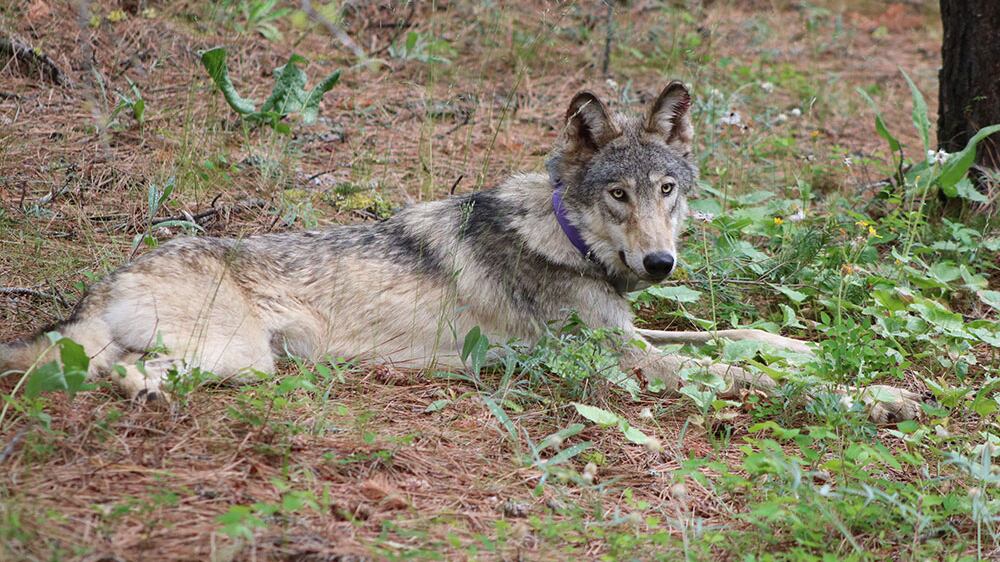On Thanksgiving eve, the California Department of Fish and Wildlife announced that wolf OR-93 had been found dead by the side of Interstate 5 in Kerns County, Calif. The department says it doesn’t suspect foul play, and the wolf likely died from being hit by a vehicle. He was 2 years old.
The gray male wolf was an Oregon native, believed to have been born into the White River pack, near Mount Hood, in 2019. He gained a level of wildlife notoriety by traveling nearly 1,000 miles south, into California—his collar tracking him as far as San Luis Obispo County.
In April, OR-93′s radio collar went silent and wolf advocates feared the worst. But then, Kerns County residents began reporting sightings of a wolf with a distinctive purple collar, and it seemed OR-93 lived on. Alas, now the fears are validated.
“I’m devastated to learn of the death of this remarkable wolf, whose epic travels across California inspired the world,” Amaroq Weiss, senior wolf advocate at the Center for Biological Diversity, said in a press release responding to the news.
Though the CDFW is quick to point out that California was once a wolf habitat, OR-93 was the first documented wolf to travel that far south since 1922.
Related: Wolf Territory Is Expanding in Southwest Oregon
In 2011, an Eastern Oregon wol, OR-07, gained national notoriety as the first to be tracked in the state of California since 1924. He eventually settled his pack in Oregon. One of his sons started a pack in Northern California. His daughter, OR-54, traveled as far south as the Lake Tahoe Basin before she was found dead two years ago.
Related: Oregon’s Most Famous Wild Wolf Is Presumed Dead
Young wolves typically roam over long distances when they reach adult age, looking for new packs and mates. Wildlife researchers call this dispersing. According to the CDFW, there are around 20 known wolves in California, but they all live in Northern California.
“OR-93′s epic California journey was a beacon of hope in a time when other states are waging a brutal war on wolves, killing them by the hundreds,” Weiss said in another release. “He was simply doing what wolves do, heading out on his own, searching for a mate. I always knew the odds of his finding another wolf on the Central Coast were slim to none, but his relentless wanderings seeking a kindred spirit connected him to the hearts of so many. He won’t be forgotten, and we’ll honor his memory by continuing to fight for the safety of wolves everywhere.”

